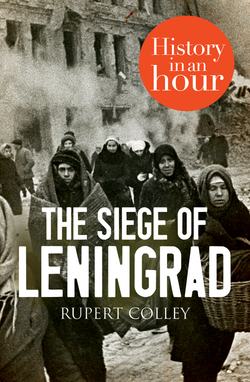Читать книгу The Siege of Leningrad: History in an Hour - Rupert Colley - Страница 6
ОглавлениеThe History of Leningrad
Named after its founder, Peter the Great, the city of St Petersburg was formed in 1703. Sitting on the mouth of the River Neva, the city, declared the capital of the Russian empire in 1712, developed into a huge flourishing port, the ‘Venice of the North’. Influenced by European fashions and tastes, it became Russia’s ‘window on the West’. It was the city of Tolstoy, of French-speaking Russian aristocrats and high culture, theatres, ballet, and art museums. But it also became the city of revolution. In 1905, the city workers downed tools and staged a huge demonstration demanding political and constitutional reform. A petition to be presented to the tsar, Nicholas II, ended in bloodshed on the steps of the Winter Palace, fomenting in the workers a deep hatred of the privileged regime. That hatred would erupt with catastrophic consequences twelve years later.
Vladimir Lenin
In February 1917, at the height of the First World War, the Tsarist government was overthrown and Nicholas II forced to abdicate. A provisional government ruled, but that too was overthrown in October by the Bolsheviks, revolutionary socialists, led by the charismatic Vladimir Lenin. Having come to terms with Germany, thus ending Russia’s involvement in the Great War, Russia became the Soviet Union and Moscow – not St Petersburg – its capital. In 1924, following Lenin’s death, the city was renamed in his honour.
During the mid-1920s, Joseph Stalin emerged from Lenin’s shadow to take power. Moving slowly but lethally, Stalin gradually removed all opposition and potential dissent, strengthening his control until the peoples of the huge Soviet empire bowed before him. Stalin ruled by fear, ‘purging’ the Soviet Union of its internal enemies, whether real or imagined. No one was safe, no one was beyond the reach of the NKVD, Stalin’s secret police, and everyone went to bed fearing a knock on the door in the early hours. Stalin was no fan of Leningrad – he resented its reputation as the cradle of the Russian Revolution, in which he played only a minor part. 30,000 Leningraders would fall during the Great Purge of the 1930s, arrested, exiled, or executed, labelled as enemies of the people.
Stalin next turned his vindictive attention to his military, purging his ablest field marshals and generals and decimating the officer corp. 40,000 Red Army personnel, deemed politically out of step, were purged. Amongst the victims were men who called for reform of the Soviet Union’s military methods, calls that were, on the whole, ignored. When war came, Stalin found himself bereft of his finest military thinkers. Nikita Khrushchev, Stalin’s successor, wrote in his memoirs, ‘There is no question that we would have repelled the Fascist invasion much more easily if the upper echelons of the Red Army command hadn’t been wiped out. They had been men of considerable expertise and experience.’
